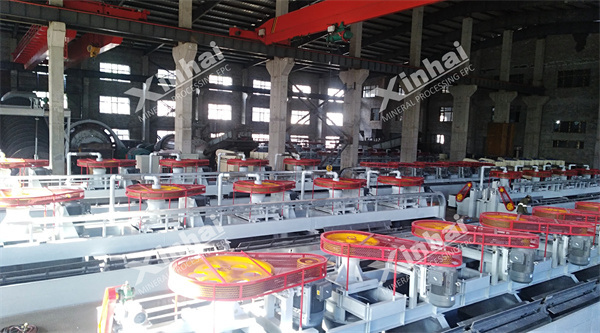There are many kinds of metal ores coexisting or associated in the ores in nature, which brings difficulties to the separation of ore dressing.
For example, copper-gold ore is a polymetallic ore containing gold and copper, with complex composition and complex and diverse intergrowth relationships. Copper minerals and gold minerals coexist closely, encapsulate, and even form a conjoined body. So how to separate copper and gold in the ore?
This article introduces the separation principle and process flow.
The principle of copper-gold separation is nothing more than separation based on the differences between the two, which mainly include physical differences and chemical differences:
(1)Differences in the physical properties of copper and gold
The difference in physical properties between copper and gold is mainly reflected in their different densities and hardnesses.
Density: The density of gold is relatively large, usually around 19.3 g/cm³, while the density of copper is about 8.96 g/cm³;
Hardness: The hardness of gold is relatively low, with a Mohs hardness of 2.5-3, while the hardness of copper is 2.5-3.
The difference in physical properties provides a theoretical basis for the separation of copper and gold, and the gravity separation method can be used to complete the initial separation of the two.
(2)Differences in the chemical properties of copper and gold
The difference in chemical properties between copper and gold is reflected in their different stability. Gold usually exists in the form of a single substance in nature, with stable chemical properties and is not easy to react chemically with other elements; while copper usually exists in the form of sulfide or oxide, with active chemical properties.
The difference in chemical properties provides a theoretical basis for the separation of copper and gold by flotation, chemical leaching and other methods.

Flotation is more widely used in copper-gold separation. According to the mineral composition and distribution relationship of the ore, the separation and segmentation flotation process and the flotation open-circuit and closed-circuit process can be used. The processes of these two processes are as follows:
(1)Separation and segmentation flotation process
This process preferentially floats copper sulfide minerals and gold-bearing sulfide minerals to obtain qualified gold-copper concentrate; the flotation tailings are recycled with copper oxide minerals to obtain gold-denominated copper concentrate products. The specific steps are as follows:
Ore crushing and grinding: The gold-copper ore is crushed and ground to make the ore particle size reach a fineness suitable for flotation.
Prioritize the flotation of copper sulfide minerals: Add appropriate flotation reagents to the slurry, preferentially float copper sulfide minerals and gold-bearing sulfide minerals, and obtain gold-copper concentrate.
Flotation tailings treatment: Regrind and refloat the flotation tailings, recover the copper oxide minerals therein, and obtain gold-denominated copper concentrate.
Concentrate treatment: The gold-copper concentrate and copper concentrate are further processed to improve the grade of gold and copper.
(2)Open-circuit and closed-circuit flotation process
Open-circuit and closed-circuit flotation process is another common method for separating gold and copper. The open-circuit process usually includes one roughing, multiple fines and multiple scavenging. By adjusting the flotation reagents and operating conditions, the effective separation of gold and copper can be achieved. The closed-circuit process is based on the open-circuit process, and the middlings are returned in sequence to further improve the concentrate grade and recovery rate. The specific steps are as follows:
Ore crushing and grinding: The gold-copper ore is crushed and ground to make the ore particle size reach a fineness suitable for flotation.
One roughing: Add appropriate flotation reagents to the slurry, perform one roughing, and obtain roughing concentrate and tailings.
Multiple fines: The roughing concentrate is fined multiple times to gradually improve the concentrate grade and obtain the final gold-copper concentrate.
Multiple scavenging: The rough tailings are scavenged multiple times to recover the valuable metals and improve the recovery rate.
Return of middlings: The middlings produced in the selection and scavenging process are returned in sequence to further improve the concentrate grade and recovery rate.
The above are some common methods for separating copper and gold in ores. In actual production, due to the various intercalation relationships between copper and gold and the different compositions of gangue minerals, representative ore samples should be taken for ore dressing tests before determining the ore dressing plan, and a suitable ore dressing process should be formulated based on the test results.